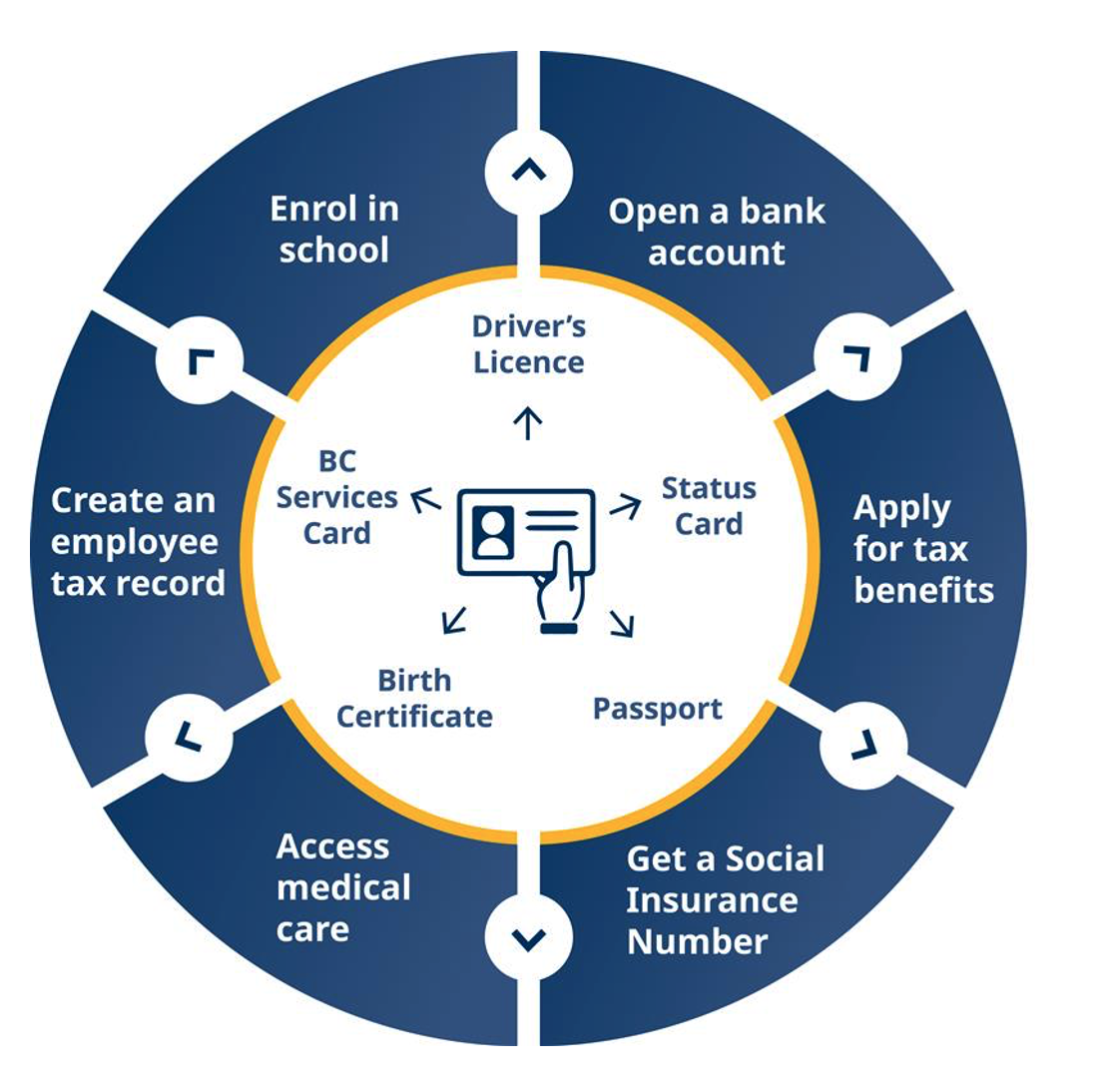Adding Indigenous languages to government ID
|

Imagine being asked to use a name that’s not your own because government systems can’t accommodate your given name in your language. For many Indigenous people across British Columbia, this is their reality.
At the BC Data Service within the Ministry of Citizens’ Services, we’re working to change this. Our team has started work to support the option of using Indigenous language names on government documents such as a birth certificate or BC Services Card, alongside a name using English letters (A-Z).
A step toward reconciliation
Indigenous peoples have preserved and maintained a rich diversity of languages in B.C. despite centuries of colonial policies designed to erase them. The legacy of forced assimilation, residential schools and the anglicization of place names has had a lasting impact on Indigenous languages.
In November 2019, the Government of B.C. passed the Declaration on the Rights of Indigenous Peoples Act. The corresponding action plan commits government to including Indigenous languages in official records, services and systems. This work supports reconciliation and aligns with the Digital Code of Practice, which aims to build trust and ensure inclusive, accessible services for all.
Once completed, this initiative will enable government to:
- Record Indigenous language names for people, places or businesses
- Display Indigenous language names in provincial applications, data and mapping systems
- Print signs, correspondence and documents that contain Indigenous languages
Modernizing government systems
There are more than 1,200 systems across government that require updates to accommodate Indigenous language characters, many of which are interconnected. If just one system fails to process Indigenous-language data, individuals may not be able to access essential services.

For example, to get a BC Services Card a person typically uses a birth certificate. If the birth certificate contains Indigenous language characters but other systems do not, these systems will not work together.
The same process applies for getting other forms of identification, including:
- Social insurance number
- Driver’s licence
- Passport
With the complexity of this work and the need to maintain access to essential services, we must proceed carefully. We’re working with Indigenous Peoples at every step of the way to understand their priorities and guide our path forward.
Moving forward together
We’re taking a distinctions-based approach to consult with Indigenous Peoples throughout this work. In preparation for consultation and cooperation with Indigenous Governing Bodies, we are engaging with Indigenous people across B.C. to understand their needs and wishes related to Indigenous names on ID.
Through engagements, we’ve learned that a dual-language name ID (showing both Indigenous-name and English versions) may be an interim solution. This would allow Indigenous language names to be accurately displayed while also accommodating systems that are not yet updated.
As one of our engagement participants shared, “I really appreciated being walked thorough these different options with my legal name and traditional name. It was a significant moment for me as I was given a Salish name by my Grandma. And there it is in black and white. This process brought home for me how significant my Salish hwulmulxw snet (Hul’q’umim’num name) is. Huychqa (thank you).”
Setting the standard
With the creation of BC Sans, we have an inclusive font that can show characters from Indigenous languages in B.C. But including Indigenous languages in government records, systems and services needs more than just a font.
It requires specific technology to correctly document a name with Indigenous characters. Without the right technology, the name can get distorted as it moves through each step of the system.

Step 1 – Receive: Client provides ID with their Indigenous language name.
Step 2 – Input: Staff uses a keyboard for the language and font to capture the name on the intake form.
Step 3 – Ingest: The intake form information is sent to the database.
Step 4 – Digest and Store: The software reads, encodes and stores the name.
Step 5 – Search and Retrieve: When staff searches the database for a name, the database system finds and retrieves the name and sends it to the print system.
Step 6 – Transmit: The print software reads the name from the database and sends it to the printer.
Step 7 – Print: The printer reads, encodes and prints, then staff add the client intake report to the client file.
To make sure our technology supports Indigenous languages, BC Data Service created the Indigenous Languages Technology Standard. This standard outlines the requirements for government systems to be able to read, write, store, process and display Indigenous languages. By following the standard across government, we can ensure names in Indigenous languages appear consistently across all our systems.
What’s next?
The BC Data Service is preparing for consultation and cooperation with Indigenous Peoples to decide how best to move forward, including discussions about implementing dual-language name IDs, how these names should be registered, and which government services should prioritize the inclusion of Indigenous languages.
The team will continue to work in partnership with ministries, other jurisdictions and Indigenous communities to develop the supports and guidance necessary to include Indigenous languages in more government services.
Within 10 years, we aim for Indigenous people to be able to use their language names for all service interactions with B.C. government, ensuring a more respectful and inclusive experience.
Visit our webpage to learn more about this project and read updates about including Indigenous languages in government records, systems and services.
